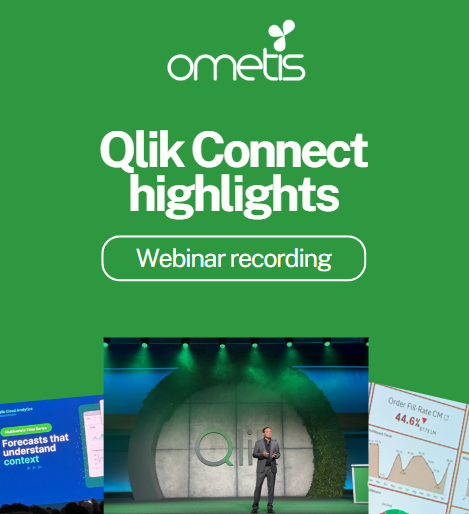Qlik Subscription – Leveraging Your Investment In Qlik
Over the past 12 months, Qlik have made it very clear they are transitioning to be a cloud-first SaaS business and a Qlik subscription model.
When we look at the rest of the market, the Qlik subscription model is following suit and trying to make their offerings more agile and flexible with lower barriers of entry and less risk for the consumer.
That being said, what does this transition mean for you?
Are you new to Qlik?
Then that is easy, they are a number of different licence options to cover all use-cases, from small deployments to thousands of users across multiple locations. Essentially your Qlik subscription will relate to how you use the software and the number of users/amount of time you need.
What if you already have Qlik?
First off, I think it’s worth saying that Qlik will not force customers to go down the subscription route, but they will certainly be encouraging you to do so.
We see signs of this already with the additional elements you get if you purchased on a Qlik subscription-licence model.
You get a test and development environment included in the fee you pay for users on your production environment within Qlik Sense.
You get access to Qlik Cloud Services – this is Qlik’s own hosted platform for Qlik Sense. It really means Qlik are lifting the barrier to entry for smaller, less-complex use-cases, as limits on both file size and access to data sources apply. They are also really pushing the multi-cloud approach where you may choose to extract and transform data on-premise but publish to Qlik’s cloud for some consumption use-cases.
With Qlik subscription you also get access to (some of) Qlik’s Continuous Classroom. This comes in the form of The Business Analyst learning path, it’s not going to tell you everything you ever need to know about Qlik Sense but it’s a start and certainly helps with user adoption if they have a self-paced learning resource to rely on. If you need to know more, don’t fret – that’s where we come in. Just follow the Ometis channels and keep up-to-date on our latest Ometis blogs for the latest tips, tricks and user guides.
Flexibility around licencing is certainly a focus area for Qlik and with a subscription licence model they have introduced Analyser Capacity, a usage-based licence that gives users access to Qlik products based upon the active time they spend on it. Couple this with the flexibility to reconfigure your licence setup at the end of each term (usage can go down as well as up) and you get some compelling reasons to at least consider the subscription approach, even if you have previously invested and purchased Qlik through a perpetual model.
Maybe the most important element of going with subscription is the roadmap, we are going to see the best functionality come with subscription, the most flexible and cost-effective licence options comes with subscription and the access to the best of multi-cloud will only come with subscription.
You want to consider Qlik subscription, what are your options?
Well this is the complex bit, there are many complications in interpreting what you have already and what that should look like in the subscription world, but rest assured if you have invested in Qlik and you want to continue to get the most from that investment by moving to subscription, there will be a way.
I’ll cover a few scenarios here, but if I have missed your specific scenario, or you just want more info, by all means get in touch.
I purchased Qlik Sense on a perpetual model, but I want to benefit from the added function and Analyser Capacity licence approach.
Good news here, there will be a simple process to move from perpetual to subscription and we fully envisage that over the course of the next few years Qlik will get creative in the offers we see to encourage that move to subscription. Right now there is a pathway that allows you to migrate to the subscription model. This comes with an uplift of your existing annual fee and a minimum purchase of some additional licencing (QAC Packs).
I have QlikView but I want to move to Qlik Sense and go to subscription.
Again, this is perfectly achievable there is a remix certificate that needs to be completed that turns your QlikView Licence in to a Qlik Sense estate, then you follow the same path as above. For Each Named User on QlikView you get a Professional User and for every four Document Cals you have, you received a Professional user in exchange too.
I have QlikView but I want to get Qlik Sense too as I see some good uses cases for Qlik Sense going forward.
Qlik have introduced a dual-use concept, where you can get like-for-like licencing in Qlik Sense as you have in QlikView, where feasible. You can stay on a perpetual model and still dual use or you can take the leap and go to subscription at the same time. Again this involves an uplift in your annual maintenance and if you are moving to subscription at the same time, you will be signing up for a new three-year term. Any monies already paid up for maintenance are taken into consideration when paying over your first year fees.
When it comes to dual use, the ratios are different to that of a remix. For every Named User Cal in QlikView you will get an equivalent Professional User and for every Document Cal you will get a named Analyser User. This in its own right brings benefits as Analysers users in QlikView are not restricted to a single document like Document Cals are.
Qlik subscription model summary
There are many more nuances and complications to add in for sure, with other QlikView licencing that doesn’t have a direct counterpart in Qlik Sense and scenarios when you only need to utilise QlikView for a transition period for instance. But if that is the case then there will still be a way forward and we are happy to offer some advice on the way to go, or list out your options for you. Just get in touch if any of this resonates or sparks your interest.
Don’t forget, you can stay up-to-date with all the latest Qlik news, tips and tricks by following us on LinkedIn or Twitter and subscribing to our YouTube channel.
By Andy Patrick





Comments